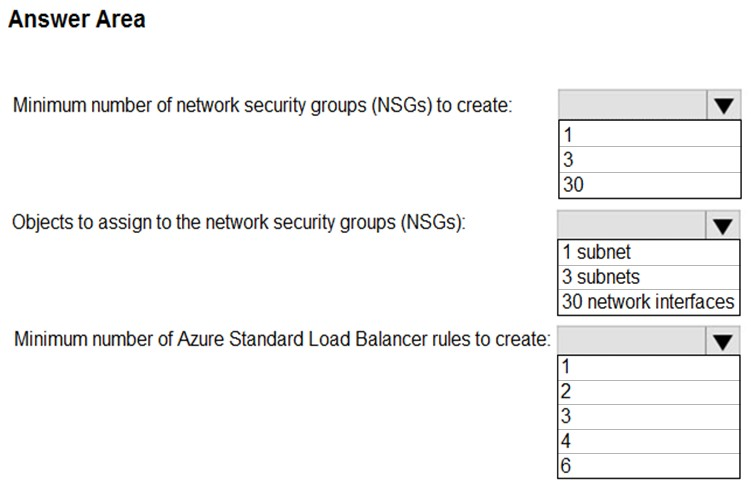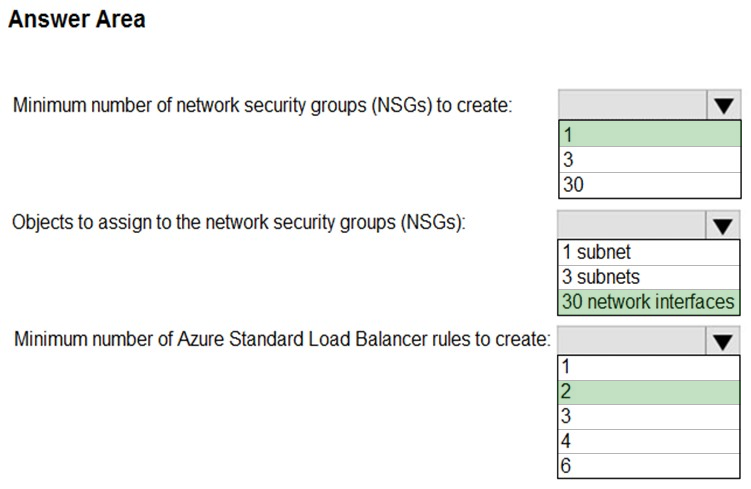

HOTSPOT -
You deploy an Azure virtual machine scale set named VSS1 that contains 30 virtual machine instances across three zones in the same Azure region. The instances host an application named App1 that must be accessible by using HTTP and HTTPS traffic. Currently, VSS1 is inaccessible from the internet.
You need to use Azure Load Balancer to provide access to App1 across all the instances from the internet by using a single IP address.
What should you configure? To answer, select the appropriate options in the answer area.
NOTE: Each correct selection is worth one point.
Hot Area:

DigitalNomad
Highly Voted 4 years, 5 months agoahorva
3 years, 6 months agoLuisV
Highly Voted 4 years, 6 months agordemontis
4 years agoitvinoth83
Most Recent 3 years, 4 months agosoucine
3 years, 4 months agoshree178
3 years, 5 months ago007NoName
3 years, 7 months agoHB100
3 years, 9 months agocodezombie
3 years, 10 months agotteesstt
3 years, 11 months agosyu31svc
3 years, 11 months agotteesstt
3 years, 11 months agotteesstt
3 years, 11 months agotelepeti
3 years, 7 months agoSatishBhuma
3 years, 11 months agokkstays
3 years, 11 months agopentium75
4 years agoleo_az300
4 years agosatyajit86
4 years, 1 month agovaisat
3 years, 9 months agoIndigoproftrader
4 years, 1 month ago